We sincerely hope that you enjoy this article about 5 Sublime North American Trees. Trees represent some of the most beautiful, varied, and amazing of the many works of Nature. They can also be found throughout most parts of the world. This continent certainly has its share of tree species, to be certain. These 5 obviously constitute the merest fraction of the species of tree in this area, but we hope that reading of these sparks an interest in you to learn more.
Boojum Tree
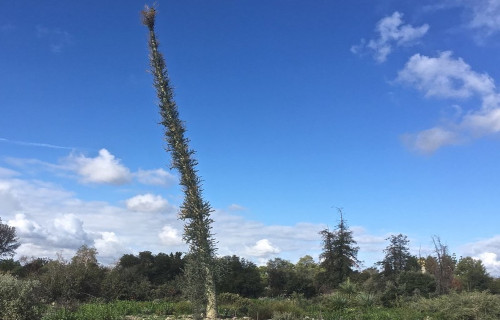
CCL: https://bit.ly/2WC4vWr
Boojum Tree Facts
- The first species we chose to list in this article about 5 Sublime North American Trees is the incredible Boojum Tree.
- Firstly, the extremely unique and fascinating variety of flora known by the unique name possesses a highly distinctive physical nature. Secondly, as a result, the fabulous plant easily stands out from other related species.
- Furthermore, its rather colorful and quite memorable common name was taken from the famous poem by Lewis Carroll. Meanwhile, it also bears the somewhat cumbersome, and lengthy, scientific name of Fouquieria columnaris.
- Quite unfortunately, however, the impressive tree also has an extremely limited range of habitation. This, therefore, renders the continued survival of this fascinating species a matter of great concern among many experts.
- But for the moment, the situation of the Boojum Tree seems to be stable. That’s because its overall numbers appears to remain sufficient to maintain its population. Due to this fact, the IUCN does not yet list it on the Red List.
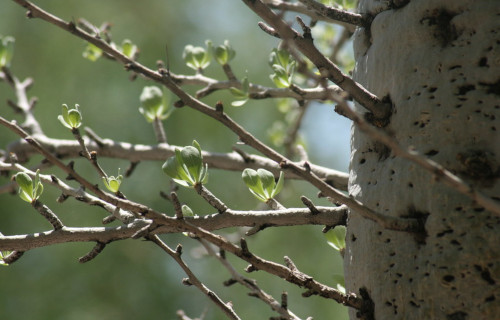
CCL: https://bit.ly/33D27QP
Boojum Tree Physical Description
It must be pointed out that the remarkable Boojum Tree earns its claim to fame for reasons other than its size. That’s because, regardless of its remarkable appearance, the tree ranks as a moderate-sized species, compared to others.
In addition, its stature serves to garner quite a bit of interest. That holds true due to the fact that mature specimens also sometimes attain a height of as much as 70 ft (20 m). This occurs despite the often prominent curving of the trunk and limbs.
Yet, regardless of its relatively high growth, the trunk of the tree typically remains quite slim, compared to similar plants. In point of fact, this trunk usually only achieves an astonishingly meager thickness. This normally equals about 10 in (25 cm).
Finally, the limbs of the awesome Boojum Tree also stand out for their uniqueness. That holds true because the thin branches typically grow at roughly right angles. These also generally develop a dense covering of small leaves, along with the trunk.
- Kingdom: Plantae
- Phylum: Angiosperms
- Class: Eudicots
- Order: Ericales
- Family: Fouquieriaceae
- Genus: Fouquieria
- Species: F. columnaris
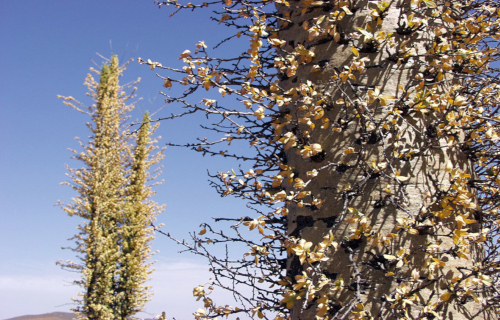
CCL: https://bit.ly/3djh2Eb
Boojum Tree Distribution, Habitat, and Ecology
The amazing Boojum Tree confuses many experts, at least in regard to its habitat range. That holds true due to the fact that the marvelous species has a highly limited range of distribution. Furthermore, that range also remains considered extremely unusual.
This state of confusion occurs because it appears to be native almost solely to the Baja Peninsula, in Mexico, in North America. In point of fact, the lone exception to this appears to be one small population, located in the Sonora region.
This distinctive range makes one pertinent fact plainly clear to researchers. That’s the fact that the plant obviously evolved to inhabit extremely dry regions. As a result, this naturally includes the deserts surrounding the region.
In addition, the wood of the remarkable Boojum Tree holds special characteristics. That’s because this wood has a spongy consistency that tends to soak up water extremely effectively. This trait evolved to help it survive the harsh climate.
Finally, this tree conceals yet another impressive evolutionary adaptation. That’s the amazing fact that its trunk also happens to develop as hollow quite often. Nature makes use of this trait, because this allows it to serve as home to colonies of honeybees.
Death Apple Tree
Death Apple Tree Facts
- Next up in this listing of 5 Sublime North American Trees comes the beautiful flora known more for its danger than its beauty, the Death Apple Tree.
- The term for the tree represents only one of the common names applied to this particular variety of tree. The choice does, however, unquestionably form the most attention-grabbing of the several most frequently used names for the fascinating flora.
- Its other names include those of the beach apple and the Manchineel. The official scientific name for the species, though, remains somewhat difficult to pronounce for most of us. That’s because scientists know it as the Hippomane mancinella.
- This spectacular, and surprising, flora owes its original classification to the noted Swedish botanist and zoologist, Carl Linnaeus. The highly respected scientist made the first known formal recognition of it as a separate and distinct species in the year 1753.
- By whatever name one chooses to call it, though, one fact about it stands out from the rest. That’s the fact that it also ranks as toxic in nature. In point of fact, this otherwise lovely plant currently represents one of the most poisonous trees known to man.
- For the moment, the somewhat deceptive Death Apple Tree appears to be maintaining a sufficient and stable population. This trend also seems to hold true throughout the entirety of its native range. The IUCN, therefore, list it as Least Concern on its Red List.
- The plant nevertheless does face certain threats that could change that status in the near future. The chief of these, like many species, remains the danger posed by climate change. It also faces the strong threat of habitat loss, due to man’s ongoing expansion.
Death Apple Tree Physical Description
The astounding Death Apple Tree accomplishes something that not every species does. That’s true since it impresses those who know of it in several different ways. One of those is its sheer size, because mature specimens manage to achieve a relatively significant height.
Exceptional individuals, in fact, attain heights of as much as 49 ft (15 m). That’s certainly not huge, of course, but it nonetheless merits appreciation. The great majority of specimens, however, typically remain somewhat shorter than this in terms of total height achieved.
The bark of the awesome Death Apple Tree, meanwhile usually presents as a reddish-gray in color. Its leaves typically display a finely-toothed structure along the edges. This foliage further averages between 2 -4 in (5 – 10 cm) in length, and develops as a light green in color.
It most highly noted feature, though, remains the one from which its common name derives. That’s its remarkable fruit, which eventually follows its greenish-yellow flowers. While all parts of the tree, remarkably, contain toxins, the fruit remains the most highly toxic.
- Kingdom: Plantae
- Phylum: Angiosperms
- Class: Eudicots
- Order: Malpighiales
- Family: Euphorbiaceae
- Genus: Hippomane
- Species: H. mancinella
Death Apple Tree Distribution, Habitat, and Ecology
Quite fortunately for the flora, the Death Apple Tree evolved as native to a relatively broad section of the world. That region actually covers a significant portion of the Northern Hemisphere. Its population therein, however, remains somewhat scattered in nature.
More precisely, though, it appears in portions of northern South America, Central America, Mexico, the Bahamas, and the Caribbean. A relatively small population of the dangerous but visually appealing tree also appears in part of the state of Florida, in the United States.
Although forced to adapt to other habitats in some locations, it shows a decided preference for where it appears. In the majority of its range, the tree therefore usually grows in one of three regions. These consist of brackish swamps, coastal beaches, and mangrove forests.
The highly toxic nature of the remarkable Death Apple Tree renders it immune to the depredations of most creatures. A few, however, do manage to interact with the tree safely. One species of iguana, in fact, manages to live in the canopy, and also eat the fruit safely.
For most other creatures, though, it’s an extremely hazardous plant. The toxins contained in all parts of it remain quite potent. Its own sap, furthermore, frequently causes severe burns to skin when exposed to it. It’s even been known to occasionally peel the paint off of cars!
Even taking shelter beneath one of these trees in a rainstorm can be dangerous. Exposure to even a single drop, as it absorbs the toxins before falling, will cause the skin to blister. If parts of the tree are burned, exposure to the smoke can also cause severe eye irritation.
Carolina Silverbell
Carolina Silverbell Facts
- The third species we are listing within this compendium of 5 Sublime North American Trees is the breathtaking Carolina Silverbell.
- First of all, the slightly descriptive term appropriately serves as the name of a truly lovely species of tree. Furthermore, this particular species of tree evolved as endemic to a quite restricted region within the Northern Hemisphere.
- Secondly, this breathtaking specimen of natural beauty also possesses a comparatively moderate rate of growth. To go along with that, the beautiful tree also has an average lifespan. This duration of life measures a total of roughly 100 years.
- It also plays an important role in the local culture. That holds true since its wood develops as both soft and closely grained. Due to this natural characteristic, it has also long been popular with craftsmen, and continues to be so even today.
- The quite delicate Carolina Silverbell also plays an important ecological role in its local environment. Firstly, its seeds represent a favorite food for squirrels. Secondly, the blooms also seem to be extremely popular with local bee populations.
- Fortunately, despite its highly limited native range, its numbers appear to presently be stable. For that reason, the IUCN lists it as Least Concern. Nevertheless, it face the potential threat of climate change, just like other species.
Carolina Silverbell Physical Description
Firstly, the visually stunning Carolina Silverbell commonly attains a height measuring roughly 66 ft (20 m). However, truly exceptional specimens of the species sometimes attain a height of as much as 128 ft (39 m) in some portions of its range.
Secondly, the sincerely gorgeous blooms of this tree never fail to catch the eye. These somewhat delicate small flowers also grow in bunches. Each typically develops a white or a pale pink color and also develop in rather copious numbers.
Thirdly, however, the fruit of the Carolina Silverbell must not be ignored, since it remains so popular with wildlife. This remains quite small, though, and light green in color. In Autumn, the numerous leaves on the tree usually change to a beautiful yellow color.
Finally, its rate of growth ranks as equally deserving of appreciation. However, the evolutionary reason for this remains a minor mystery. Nevertheless, this characteristic serves to make it a favorite among landscapers and homeowners alike.
- Kingdom: Plantae
- Phylum: Angiosperms
- Class: Eudicots
- Order: Ericales
- Family: Styracaceae
- Genus: Halesia
- Species: H. carolina
Carolina Silverbell Distribution, Habitat, and Ecology
Even within the Northern Hemisphere, the stunning Carolina Silverbell evolved as endemic to only a highly limited section of North America. More specifically, this area covers severely restricted portions of the east coast of the United States.
Even more precisely, the greatest concentration of the species occurs in the Appalachian Mountains and western Piedmont regions of North Carolina. The marvelous tree also grows in large numbers in parts of Tennessee, Georgia, and Alabama.
However, smaller populations of the Carolina Silverbell also now exist in many other regions of the United States, due to the actions of man. Not only that, but it now even exists in portions of Europe, due to its popularity as an ornamental tree.
Finally, the species does have specific climatic needs to thrive. It therefore most commonly grows in areas of moist soil, usually near free-flowing water. It also serves as a major component of the forest undergrowth within much of its range.
Southern Magnolia
Southern Magnolia Facts
- The next species appearing in this article about 5 Sublime North American Trees is the gorgeous Southern Magnolia.
- The beautiful tree represents a species of tree native to the southeastern portions of the continent on which it evolved. Furthermore, this stunning species of flora probably remains best known for the numerous large, highly fragrant flowers it produces.
- This gorgeous species further remains cultivated in warmer climates throughout the world. As a result, experts have to date developed more than 50 cultivars from this beautiful plant species. Also, the first known export of this species to other regions occurred in 1726.
- In addition, the wood of the Southern Magnolia also remains extremely popular in the commercial industry. Common uses for it include veneer, pallets, and furniture. The magnificent species forms the largest of more than 200 species of magnolia within its genus.
- Quite fortunately, its population appears to be sufficiently stable. This holds especially true due to its wide dispersal around the world. Therefore, the IUCN currently lists it as Least Concern on its Red List. But, it certainly faces the danger of climate change, like most species.
Southern Magnolia Physical Description
The truly gorgeous tree named the Southern Magnolia ranks as a medium to large species of evergreen tree. In addition, exceptional specimens of this plant can attain a height of as much as 120 ft (35.5 m). More specifically, the largest known specimen of this marvelous tree in existence stands 122 ft (37 m) in height.
This breathtaking tree also generally produces a single, quite sturdy trunk. furthermore, that feature itself generally develops a roughly pyramid-shaped structure. The leaves of the tree also grow comparatively large and broad. These average about 8 in (20 cm) in length, and 5 in (12.5 cm) wide.
The magnificent flowers of the Southern Magnolia also possess a strong natural citronella scent. These further grow as large as 12 in (30 cm) in diameter when in bloom. The fruit remains inedible and filled with large, bright red seeds. This also averages about 4 in (10 cm) long, and 2 in (5 cm) in width.
- Kingdom: Plantae
- Phylum: Angiosperms
- Class: Magnoliids
- Order: Magnoliales
- Family: Magnoliaceae
- Genus: Magnolia
- Species: M. grandiflora
Southern Magnolia Distribution, Habitat, and Ecology
To be completely precise, the magnificent Southern Magnolia seems to be specifically endemic to the southeastern United States. Furthermore, this limited range also roughly follows the southeast to southern coasts of the country. But, that range also extends from Virginia to Florida, and then westerly to Oklahoma and east Texas.
Furthermore, in the wild, the beautiful variety of tree typically occurs in a very specific and uncommon type of habitat. This distinct and less than common habitat consists of areas along the edges of swamps and moderate to large bodies of water. In addition, the wonderful tree also usually grows larger in more sheltered habitats.
Also, along the coastline, the Southern Magnolia rarely grows larger than the size of a large variety of shrub. In Florida, it adapted to a somewhat different habitat. As a result, it appears there in wooded floodplains, hummocks, and along ravines. It grows best in regions of high moisture content combined with adequate drainage.
Bristlecone Pine
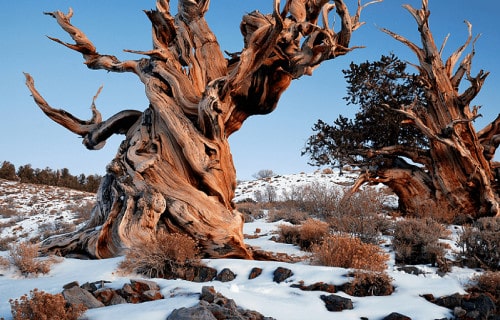
CCL: https://bit.ly/1ryPA8o
Bristlecone Pine Facts
- The fifth and final entry into this compilation of 5 Sublime North American Trees, the Bristlecone Pine, places there only due to random selection.
- Without doubt, most notably, the remarkable tree ranks as the oldest known non-clonal living species on Earth. However, the truly descriptive common term actually applies to a total of three separate related plant species. Also, all three of these trees grows slowly, due to the dry soil, cold conditions, high winds, and short growing seasons.
- But, yet another characteristic distinguishes these absolutely amazing trees from any similar species. That holds true due to the fact that they also never attains a very great height. Additionally, even the needles on this variety of pine appear to be extremely long-lasting. That’s because many of them often remain on the branches for as long as forty years.
- Furthermore, genetically related and visually similar pines also happen to exist. This fact, therefore, often renders it quite difficult to distinguish one species from the other. Due to this, an exact tally of the numbers of the pine remains impossible to determine with complete accuracy. The IUCN currently lists all three species of the Bristlecone Pine as Near Threatened.
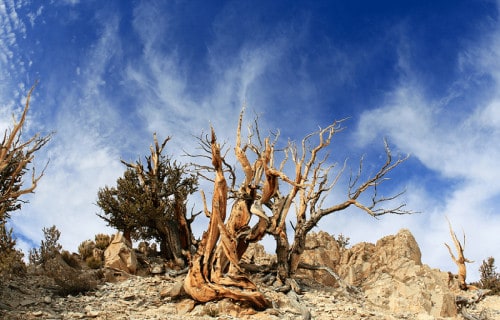
CCL: https://bit.ly/1ryPA8o
Bristlecone Pine Physical Description
First of all, the amazing Bristlecone Pine truly remains one of the most unusual trees on the planet. In fact, it develops a most distinctive shape. That holds true because the trunks of the amazing type of pine develop extremely gnarled shapes and patterns. This results in giving the plant an unmistakable shape.
The breathtaking tree also packs all of these mesmerizing qualities into a surprising package. That’s because the species remains relatively small. In point of fact, no known individuals ever achieve a height measuring greater than 60 ft (18.3 m). Further, most individuals remain considerably shorter than that.
In addition, even its root system develops in a highly unusual nature. This occurs because this grows extremely branched. Further, this particular component of the remarkable tree also typically remains quite shallow in nature. Typically, however, only a few of the larger roots provide the necessary stability.
Finally, even the wood of the stunning Bristlecone Pine stands out from the crowd. In point of fact, this feature of the three species develops as extremely dense and quite resinous in nature. This characteristic also has the benefit of providing it with resistance to insect pests, aiding in its longevity.
- Kingdom: Plantae
- Phylum: Pinophyta
- Class: Pinopsida
- Order: Pinales
- Family: Pinaceae
- Genus: Pinus
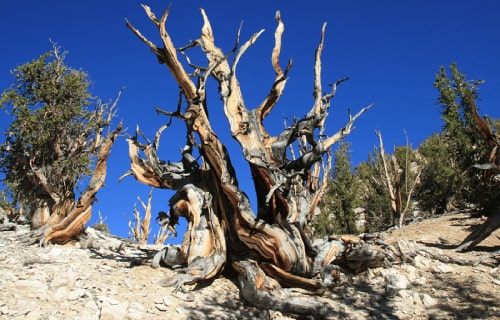
CCL: https://bit.ly/1p2b8Ke
Bristlecone Pine Distribution, Habitat, and Ecology
Of great interest to those who appreciate the resourcefulness and tenacity of Nature remains the habitat of the astonishing Bristlecone Pine. That’s due to one particularly amazing fact common to all specimens. That’s that the trees live only on a few remote, dry mountaintops located in six states in the United States, in North America.
This awesome plant typically grows at high altitudes ranging between 5,600 and 11,200 ft (1,700 and 3,400 m) in elevation. However, the vast majority of individuals of each of the three species generally occur at or above altitudes of 10,000 ft. It also grows in soil that contains high amounts of sandstone, limestone, calcium, and magnesium.
In addition, yet another astonishing fact remains about toe Bristlecone Pine. That’s the fact that all known specimens average 1000 years old. In point of fact, the oldest one’s name bears the name of Methuselah, currently 4,789 years old. The tree also remains popular for the distinctive whorls and other unusual patterns it often develops.
Further, one more astounding fact remains to make these trees true marvels of Nature. That’s due to the fact that, given their incredibly great density, dead trees can remain standing for centuries. Finally, most surviving individual trees now reside within the confines of National Parks and thus enjoy a certain amount of protection.
5 Sublime North American Trees
We sincerely hope that you have enjoyed this article about 5 Sublime North American Trees. These gorgeous and fascinating species have amazed mankind for countless centuries, and continue to do so today. But, many of these trees, and others, as well, need our help. For some of them, the future remains uncertain, due to such factors as climate change and habitat loss. It remains up to each and every one of us to do all we can to protect and preserve them for our posterity.
Check out our other articles on 7 Bizarre Ocean Invertebrates, Breathtaking Primates of the World, Spectacular Dolphins Throughout Our World, Sensational Spiders Around the World
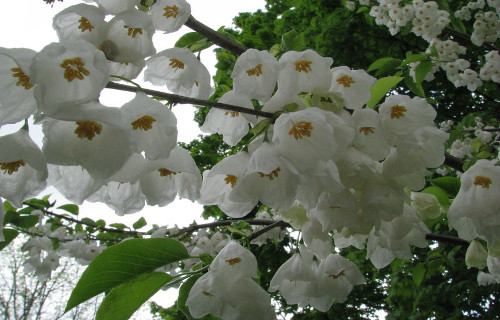
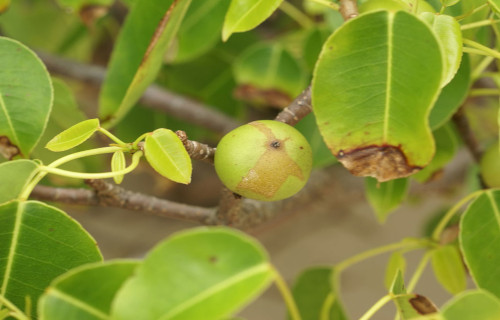
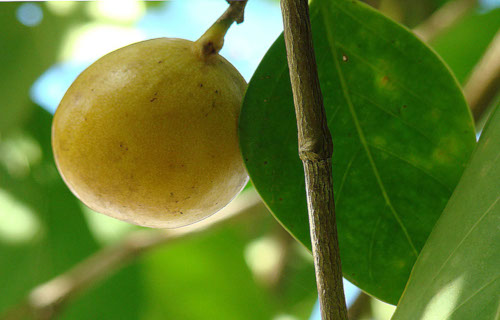
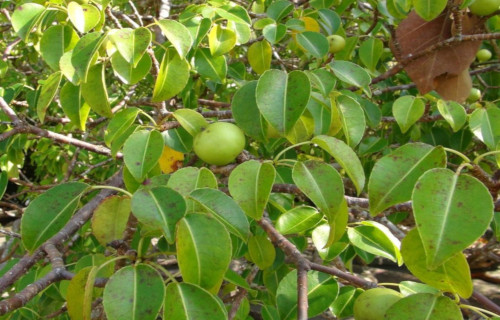
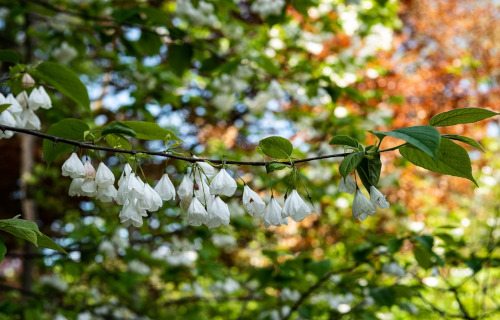
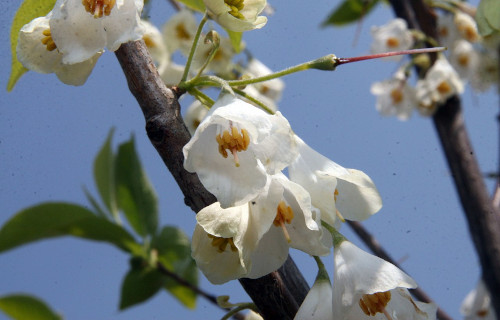

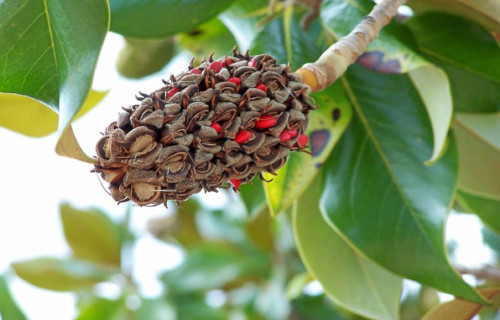
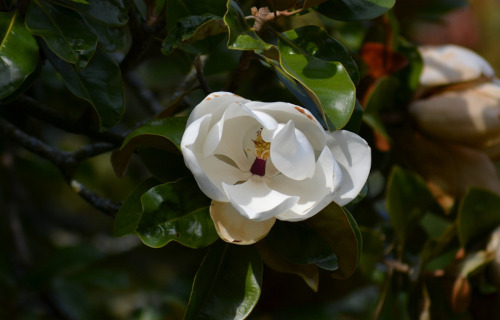









Leave a Reply